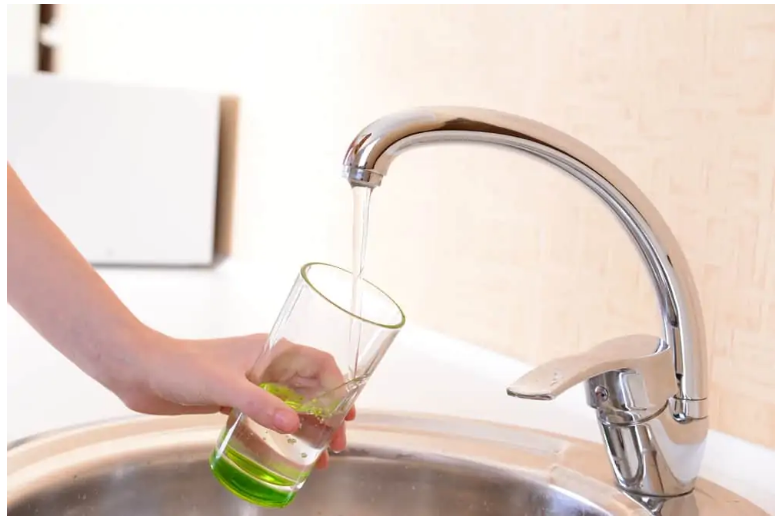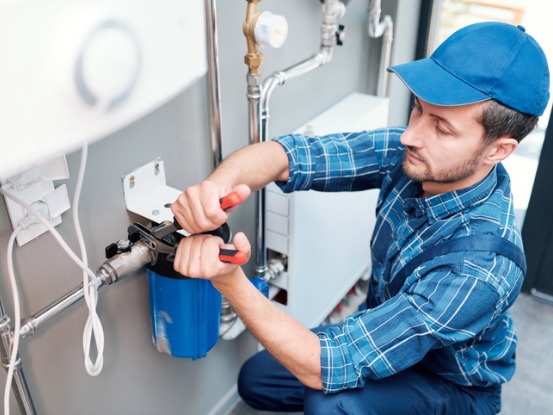Top Ways for Addressing Low Water Pressure in Your Home
Top Ways for Addressing Low Water Pressure in Your Home
Blog Article
Listed here further down you can discover lots of brilliant insights in relation to Low Water Pressure in the House?.

Low water pressure in your house can be an irritating trouble, affecting whatever from showering to cleaning recipes. If you're experiencing weak water flow, there are several possible reasons and remedies to discover. In this guide, we'll go over common reasons for low tide pressure and sensible actions to resolve the issue effectively.
Intro to Low Tide Stress
Low tide stress takes place when the circulation of water from your faucets, showers, and various other components is weaker than typical. This can make everyday jobs a lot more challenging and less reliable. Recognizing the root causes of low water stress is vital to discovering the appropriate service.
Typical Causes of Low Water Pressure
Pipeline Obstructions
Over time, pipes can become obstructed with natural resource, sediment, or particles, restricting the circulation of water. This is a typical problem in older homes with galvanized steel pipes.
Corrosion
Rust within pipes can bring about leaks and decreased water pressure. Corrosion accumulation can constrict water flow, particularly in maturing plumbing systems.
Faulty Pressure Regulators
Pressure regulatory authorities are accountable for preserving constant water pressure in your home. If they malfunction, it can lead to low water stress or uneven flow throughout the house.
Community Water Issues
In some cases, the trouble exists outside your home. Local water supply issues, such as main line leaks or maintenance job, can momentarily minimize water pressure in your location.
How to Diagnose Low Tide Pressure
Checking Faucets and Fixtures
Begin by examining the water stress at different faucets and components throughout your home. If the problem is separated to particular locations, it may suggest localized troubles.
Inspecting Pipelines
Evaluate noticeable pipelines for indicators of leakages, corrosion, or clogs. Take note of any uncommon audios, such as banging or rattling pipelines, which might suggest concerns within the plumbing system.
Consulting with a Plumber
If you're incapable to determine the root cause of low water pressure, take into consideration employing an expert plumber to carry out a complete assessment. They can recognize underlying concerns and advise ideal options.
Do It Yourself Solutions to Take Care Of Low Tide Stress
Cleaning Up Aerators and Showerheads
Mineral deposits can gather in aerators and showerheads, decreasing water flow. Remove and clean these parts on a regular basis to enhance water stress.
Flushing Water Heater
Debris buildup in the hot water heater can limit circulation and lower effectiveness. Flushing the tank regularly assists remove sediment and preserve optimum efficiency.
Inspecting Pressure Regulatory Authority
Make certain that the pressure regulator is functioning correctly. Changing or changing the regulator can aid bring back appropriate water pressure throughout your home.
Cleaning Clogs in Pipes
For small blockages, attempt utilizing a plumbing serpent or chemical drainpipe cleaner to clear blockages in pipes. Beware when using chemicals and comply with safety and security standards.
When to Call a Professional Plumber
If do it yourself initiatives stop working to resolve the problem or if you suspect considerable plumbing issues, it's ideal to seek aid from a licensed plumber. They have the expertise and devices to deal with complicated issues safely and successfully.
Preventive Measures to Maintain Water Pressure
Routine Upkeep
Schedule routine upkeep for your plumbing system to stop issues such as corrosion, leakages, and clogs. Attending to minor issues early can assist stay clear of more considerable fixings in the future.
Mounting a Stress Booster
Consider mounting a stress booster pump to enhance water pressure in areas with constantly reduced circulation. This can be particularly helpful for multi-story homes or properties with high-demand fixtures.
Surveillance Water Usage
Be mindful of water use routines and prevent ill-using the plumbing system. Straightforward adjustments, such as staggering showers and laundry loads, can help preserve ample water pressure.
Verdict
Handling low tide stress can be irritating, however identifying the underlying causes and executing appropriate solutions can bring back optimum flow throughout your home. Whether it's cleaning aerators, examining pipes, or talking to a plumber, taking proactive actions can ensure a constant supply of water for your day-to-day requirements.
FOUR WAYS TO FIX LOW WATER PRESSURE NOW
Turning on a shower or faucet only to find the water comes out in a sad, slow drizzle is never a good feeling. How exactly are you supposed to wash a pan or take a quick shower when it takes 10 minutes just to rinse off a little soap? The good news is that when your water pressure is bad, there's always a cause: typically one that can be easily fixed. Here are some of the most common causes of low pressure and what you can do to fix the issue:
DEBRIS AND MINERAL DEPOSIT BUILDUPS
If you notice low water pressure from just one or two of the fixtures in your house, the problem likely has to do with debris buildup. Water is full of minerals and other debris, all of which can accumulate in your pipes and on your fixtures. This can cause a blockage that affects how much water flows through. To fix this, try filling a small plastic bag with white vinegar, and use a rubber band to hang it around your showerhead or faucet. Let the head of the fixture soak for a few hours, and the vinegar should loosen the deposits.
WATER LEAKS
Leaks are another common cause of low water pressure. If water is flowing out of your plumbing through a hole or crack before it can reach your fixture, the pressure coming out of the faucet or showerhead will be lower. A plumbing professional is your best bet for finding and repairing a leak in your water supply pipes.
Leaks are another common cause of low water pressure. If water is flowing out of your plumbing through a hole or crack before it can reach your fixture, the pressure coming out of the faucet or showerhead will be lower. A plumbing professional is your best bet for finding and repairing a leak in your water supply pipes.
FOUR WAYS TO FIX LOW WATER PRESSURE NOW
Turning on a shower or faucet only to find the water comes out in a sad, slow drizzle is never a good feeling. How exactly are you supposed to wash a pan or take a quick shower when it takes 10 minutes just to rinse off a little soap? The good news is that when your water pressure is bad, there's always a cause: typically one that can be easily fixed. Here are some of the most common causes of low pressure and what you can do to fix the issue:
DEBRIS AND MINERAL DEPOSIT BUILDUPS
If you notice low water pressure from just one or two of the fixtures in your house, the problem likely has to do with debris buildup. Water is full of minerals and other debris, all of which can accumulate in your pipes and on your fixtures. This can cause a blockage that affects how much water flows through. To fix this, try filling a small plastic bag with white vinegar, and use a rubber band to hang it around your showerhead or faucet. Let the head of the fixture soak for a few hours, and the vinegar should loosen the deposits.
WATER LEAKS
Leaks are another common cause of low water pressure. If water is flowing out of your plumbing through a hole or crack before it can reach your fixture, the pressure coming out of the faucet or showerhead will be lower. A plumbing professional is your best bet for finding and repairing a leak in your water supply pipes.
Leaks are another common cause of low water pressure. If water is flowing out of your plumbing through a hole or crack before it can reach your fixture, the pressure coming out of the faucet or showerhead will be lower. A plumbing professional is your best bet for finding and repairing a leak in your water supply pipes.
A VALVE ISSUE
If you have low water pressure throughout your home, check your main shut-off valve to make sure it's completely open. You may also want to see if there's a pressure-reducing valve installed. If there is, have a plumber help you adjust the settings to get the pressure you're looking for.
OTHERS USING WATER
Believe it or not, your low water pressure could be caused by your neighbors. If you notice low pressure at certain times of day, it may be because you and the people living next to you have similar schedules - when everyone is showering at the same time, the pressure will be lower in every home. Low pressure throughout the neighborhood may also be caused by an issue with your municipal water supply. If that's the case, call the supplier to see if they're working on the issue.
https://www.rotorooter.com/blog/water-leaking/low-water-pressure-fixes/

I am just very occupied with Dealing with Low Water Pressure in Your Home and I am assuming you enjoyed the entry. I beg you take a moment to distribute this article if you enjoyed it. Thank you for going through it.
Book-Now Report this page